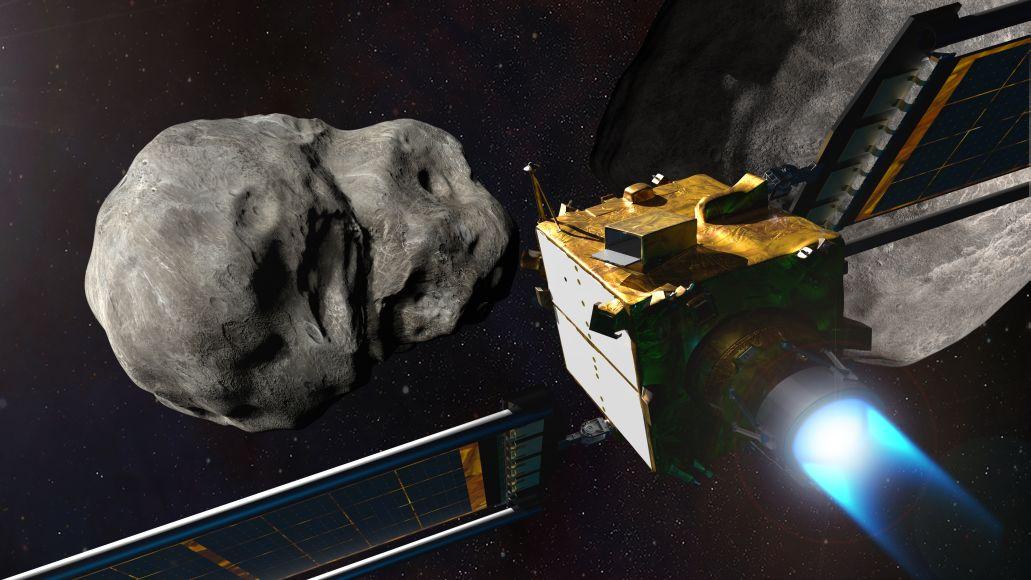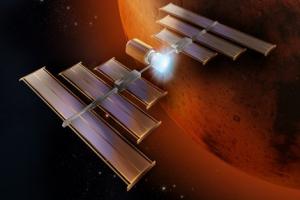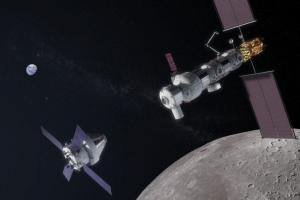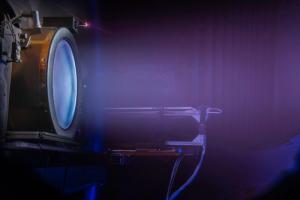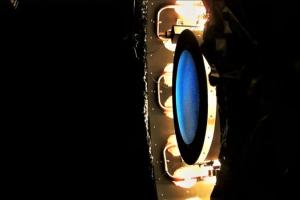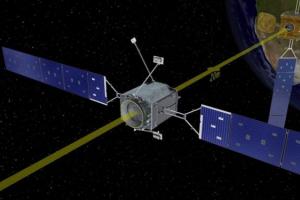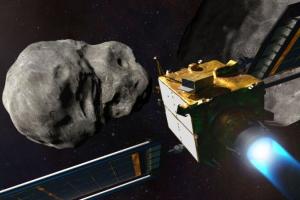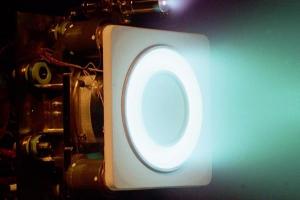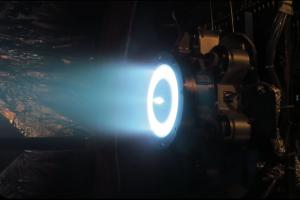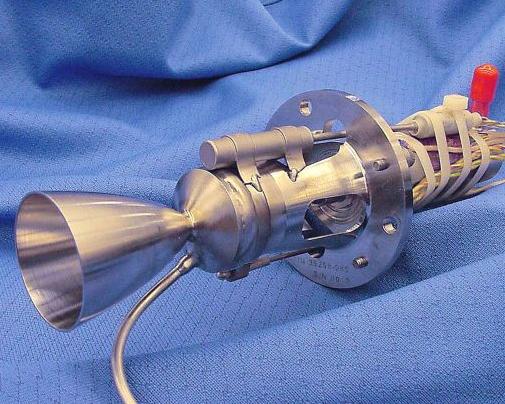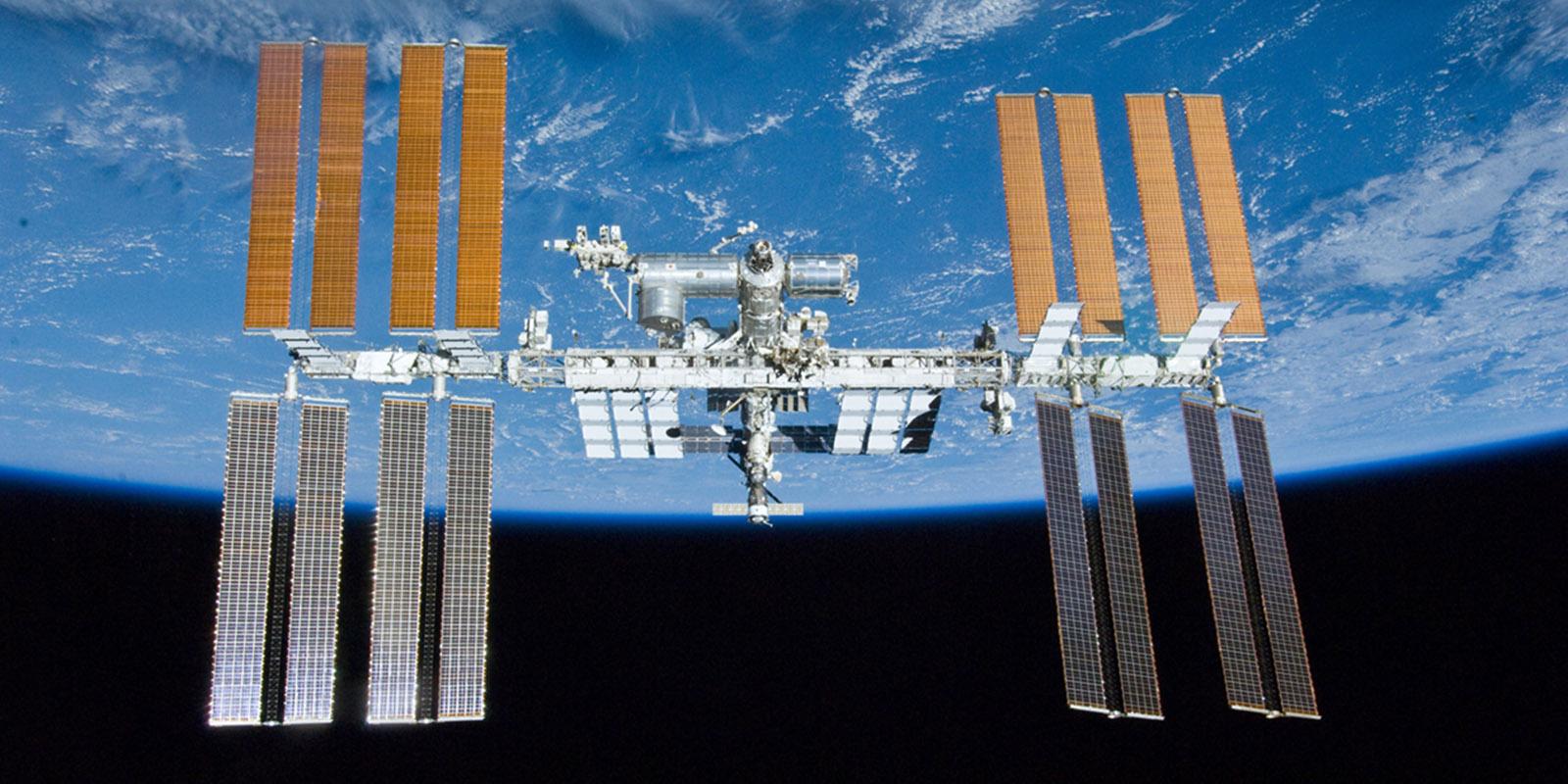Solar Electric Propulsion
Sustainable and reliable in-space propulsion
Solar Electric Propulsion (SEP) is commonly used to transfer satellites to their proper orbital locations and keep them on station once there. Energized by the electric power from on-board solar arrays, SEP systems use significantly less propellant than comparable, conventional chemical propulsion systems.
Aerojet Rocketdyne is the world leader in the development, qualification and flight of electric propulsion systems that enable civil, defense and commercial missions for various customers. We have delivered more than 600 electric propulsion thrusters that have flown on over 250 satellites to date.
Benefits of SEP
- Lower launch mass from carrying less propellant enables reduced launch cost
- Reduced propellant mass enables additional payload capacity
- Extended satellite maneuvering and mission lifetimes with the same quantity of propellant
Enabling Deep Space Human Missions
In addition to satellite operations, SEP systems are key to enabling future crewed deep space missions. Aerojet Rocketdyne is developing advanced electric propulsion systems that will enable humans to go back to the Moon and on to Mars. SEP will play a critical role in the efficient transfer of cargo and payloads to deep space ahead of crew arrival.
Current SEP Products
- XR-5: The flight proven XR-5 Hall thruster subsystem is currently employed on both commercial and government satellites, including the Space Force’s Advanced Extremely High Frequency (AEHF) constellation, Northrop Grumman’s GEOstar-3™ GEO Comsat and Mission Extension Vehicles, and Lockheed Martin’s LM2100™ GEO Comsat.
- AEPS: Developed with NASA Glenn Research Center and JPL, Aerojet Rocketdyne’s 12kW Advanced Electric Propulsion System (AEPS) thruster completed development testing in 2021. AEPS operates at 12 kW – more than twice the power level of electric thrusters flown on satellites today. Three AEPS thrusters will serve as the primary source of propulsion on the Power and Propulsion Element (PPE) for NASA’s international lunar Gateway to enable orbit transfer and in-space maneuvering.
- NEXT-C: NEXT-C is a next-generation solar electric propulsion system designed and built by Aerojet Rocketdyne based on mission-proven technology developed at NASA’s Glenn Research Center. The 7kW NEXT-C Ion System made its debut on NASA's Double Asteroid Redirection Test (DART), when it launched in 2021. The NEXT-C system completed acceptance and integration testing at NASA Glenn Research Center and was delivered to John Hopkins Applied Physics Laboratory in May 2020. DART will demonstrate NEXT-C’s potential for application to future NASA missions.
- XR-100: Along with teammates JPL, ZIN Technologies Inc. and the University of Michigan, Aerojet Rocketdyne developed and tested a 100kW Nested Hall Thruster system, including a power processing unit and xenon feed system for the XR-100 program (under NASA’s NextSTEP program).
- MR-510 Arcjets: Aerojet Rocketdyne arcjet engines have an arc of energy running through the hydrazine propellant, heating and speeding it up to create thrust and increase the specific impulse from about 220 s to 585s. Arcjets have flown on over 55 spacecraft and are currently employed on Lockheed Martin LM2100™ and Boeing 702MP satellite buses.
- MR-502 IMPEHT: Aerojet Rocketdyne Improved Electrothermal Hydrazine Thrusters (IMPEHT) enhance the specific impulse performance of hydrazine thrusters by pushing electrical power through a resistive element. This enables a simple hydrazine propulsion system to deliver both bipropellant-level performance and monopropulsion performance from a single “multi-mode” system. IMPEHTs have successfully flown on over 200 satellites, including Northrop Grumman GEOstar-2™ satellites, Lockheed Martin Series 3000 and 4000 satellites, and all satellites in the original Iridium constellation.
Resources
Videos
News Updates
- May 19, 2023 - Aerojet Rocketdyne to Collaborate with NASA on Exploration Technology Demos
- August, 2021 - Mission Critical AEPS Thruster Completes Development Testing for NASA’s Lunar Gateway
- June, 2021 - Aerojet Rocketdyne Successfully Demonstrates New Medium-Power Electric Propulsion Engine
- May 19, 2020 - Aerojet Rocketdyne Delivers DART Spacecraft Propulsion Systems Ahead of 2021 Asteroid Impact Mission
- February 2020 - Aerojet Rocketdyne To Play Critical Role in Planetary Defense Asteroid Mission
- October 2019 - Aerojet Rocketdyne Propulsion Helps Enable New Satellite Servicing Market
- Aug. 08, 2019 - U.S. Air Force Communications Satellite Relies on Aerojet Rocketdyne Propulsion Throughout Its Service Life
- Oct. 18, 2018 - Aerojet Rocketdyne Propulsion Powers the Fourth U.S. Air Force Advanced Extremely High Frequency Satellite Mission
- Aug. 29, 2018 - Aerojet Rocketdyne Completes NextSTEP Appendix C Study
